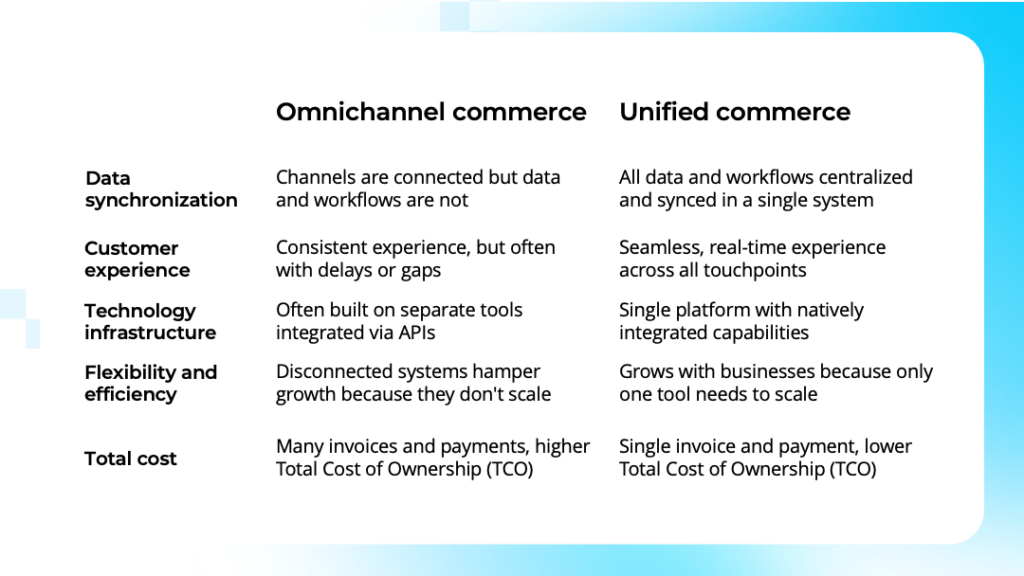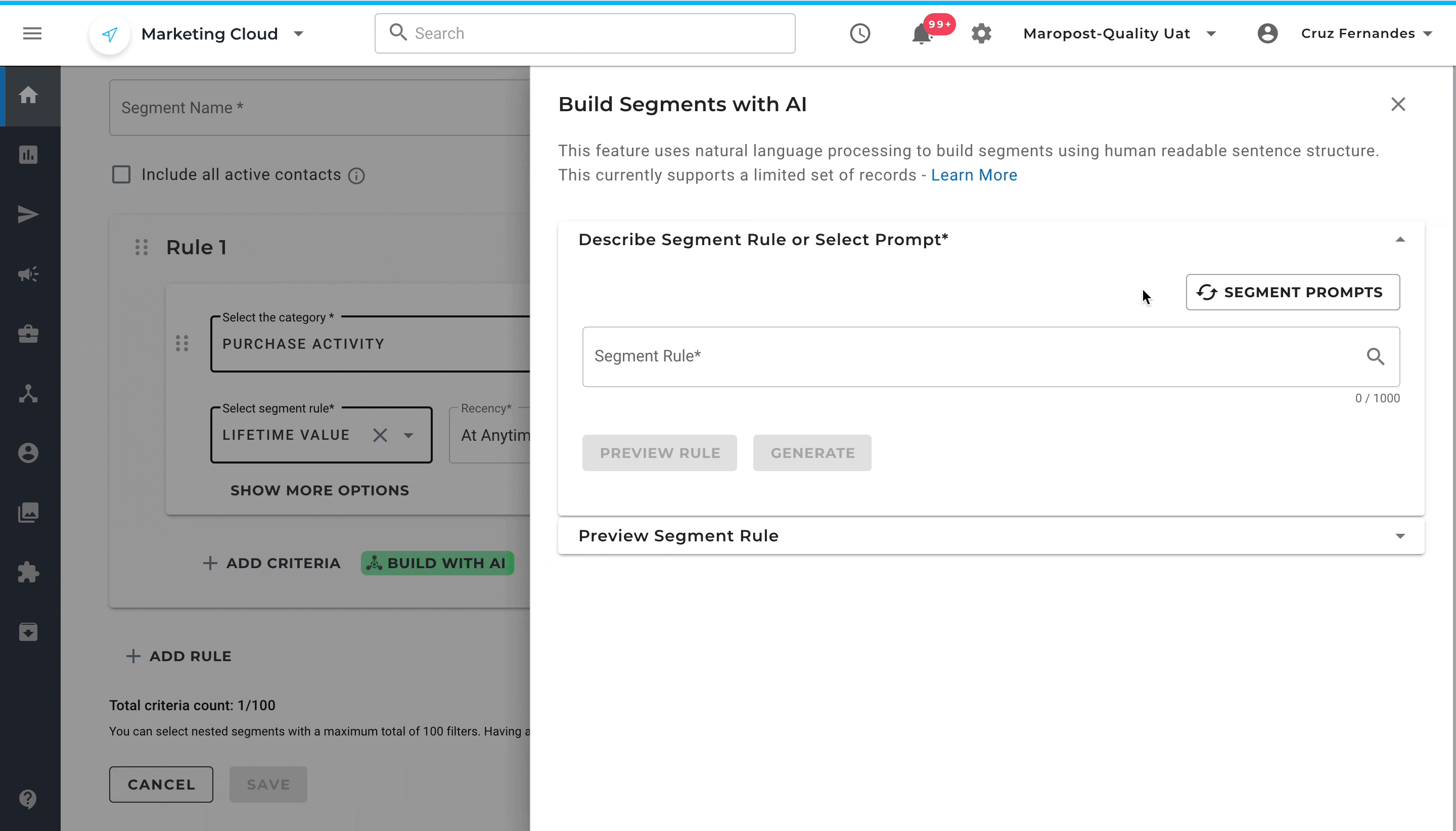With decades of experience in ecommerce and marketing technology, Peter Messana and Jim Koepke know what it takes to scale successful commerce brands.
Now Maropost’s President and COO, Peter has led multiple high-growth ecommerce companies, including Searchspring, a leading merchandising platform. Jim, Maropost’s CRO, previously held key leadership roles at Emarsys and ExactTarget, helping brands drive customer engagement and revenue.
In a recent conversation, they explored the future of ecommerce software—what’s changing, what’s next, and what businesses need to know.
More than a mess: The real cost of disjointed software
Jim: Alright, Peter, let’s dive right in. What’s the biggest challenge businesses face with today’s ecommerce software?
Peter: Too much disparate, disconnected software and systems. Too many businesses are juggling three, four, or even more different tools—point solutions—just to manage their basic operations. It’s a mess.
Jim: More than a mess, right? All that fragmentation makes it nearly impossible for store owners to get a big-picture view of customer data and business performance unless they invest in yet another analytics tool.
Peter: Right. Then, when you factor in the total cost of ownership (TCO) for all these point solutions, it becomes a real burden, especially for mid-market companies. And especially since costs for each tool always slowly and steadily creep up without anybody noticing. They add up fast.
Jim: When times are good, businesses are more flexible with their spending, but it’s not about “growth at all costs” anymore. When things tighten up, shipping costs rise, and labor gets more expensive. TCO becomes a critical concern for business owners. Unified commerce platforms solve some of those challenges, correct?
Peter: Yep. They address the core issue of all those disparate systems by bringing together essential ecommerce business functions under one roof. And while they may not always include every feature of standalone solutions, they offer 70-90% of the functionality businesses actually use.

Jim: Right, so it’s not about having a ton of bells and whistles; it’s about having the right combination of features to drive better outcomes. The real power comes from unifying data, executing integrated campaigns, and from the insights or business intelligence gained.
Peter: Businesses can make smarter decisions faster by centralizing data and operations.
What’s the difference between unified platforms and omnichannel platforms?
Jim: Not long ago, everyone was talking about omnichannel platforms. How are unified platforms different?
Peter: Omnichannel platforms patch software together with surface-level integration, so your tools are connected but still fragmented. Unified platforms centralize and synchronize data, workflows, and analytics across every tool and touchpoint in real time. And managing commerce operations from a single platform cuts costs, eliminates inefficiency, and improves customer experiences.
Jim: Are all unified commerce platforms the same? What should brands look out for?
Peter: Some commerce platforms “unify” more than others—many stop at ecommerce and POS software, requiring third-party integrations for marketing automation and other tools. Everything on our platform is native and seamless: ecommerce, POS, merchandising, service, and the data intelligence they deliver.

Better business intelligence separates VCPs (very costly people) from VIPs
Jim: Let’s dig deeper into the data intelligence aspect. How is it shaping the future of commerce software?
Peter: It should be at the heart of modern commerce. With centralized business intelligence, companies can dig deeper than top-line revenue. They can drill down into the profitability of each customer, understand purchasing and return patterns, and make data-driven decisions in real time.
Jim: Got an example?
Peter: Let’s say you have a customer who’s not sure how a pair of jeans they like will fit. Not long ago, they might have tried on a stack of jeans in a dressing room and purchased the ones they liked best. But now, they’re in a pattern of buying multiple items at once through ecommerce and returning most of them.
From a revenue perspective, that customer looks like a VIP. But when you factor in those returns, they cost you money since you are almost forced to offer free shipping and returns to compete.

Unified customer profiles: The secret to consistently delightful customer experiences
Jim: So, how will unified platforms transform customer engagement across different channels?
Peter: The goal is true omnichannel engagement—integrating email, SMS, chat, and other channels into a cohesive strategy. The key is having that unified customer profile data to finally enable consistent—and consistently delightful—customer experiences across all touchpoints, from marketing to sales and support.

Also, channel preferences can vary significantly in different markets. For instance, WhatsApp is incredibly popular for customer engagement in APAC, EMEA, and South America. In other markets like the US, SMS might be the preferred non-email channel. A unified platform allows businesses to adapt to these preferences while maintaining a consistent view of the customer.
Software scalability: Growth without growing pains
Jim: As businesses grow, their needs change. That means scalability is absolutely critical. A unified commerce platform will support a business from $1 million all the way to $1 billion in revenue without the need for a total tech stack overhaul at each stage of growth.
Peter: Yes, this is where unified platforms really shine. They can handle multi-store, multi-currency, and multi-language operations, which become increasingly important as businesses expand. They balance simplicity for smaller operations with the sophistication needed for larger enterprises.
How unified commerce simplifies and streamlines everyday operations
Jim: Let’s shift gears and talk about how unified commerce platforms will impact day-to-day operations for different teams.
Peter: Unified commerce platforms will significantly reduce operational complexity. Instead of switching between multiple systems and reconciling data from different sources, teams can work from a single source of truth.
Jim: That makes collaboration more meaningful. I’ve seen situations where merchandisers and email marketers are at odds because they work from different datasets and KPIs. With a unified commerce platform, everyone’s aligned around the same goals and metrics.
Peter: And that alignment will lead to better business-building strategies. You could create customer segments based on recent website activity, purchase history, and engagement patterns across channels and use them for super-precise marketing campaigns.

What’s ahead? The not-too-distant-future of commerce software
Jim: Now, Peter, looking ahead, what trends do you see shaping the future of commerce software?
Peter: Well, let’s focus on the near future—not five, ten years from now. But five, ten months from now.
In Marketing Cloud, AI makes email audience segmentation easy and fast. Merchandising Cloud uses AI to surface recommendations inline or through intelligent search based on shopper preferences, behaviors, and history—products customers are more likely to buy.

Today, we’re just scratching the surface. AI and machine learning will be increasingly important, especially in hyper-personalizing customer experiences and streamlining backend operations. Unfortunately, many of these gains will be unrealized through the fragmented tech stacks of most merchants.
Jim: Another trend I’m seeing is a growing emphasis on first-party data, partly driven by changes in privacy email sender regulations.
Peter: Yes, and of course, there’s the ongoing convergence of online and offline commerce. The line between ecommerce and physical retail continues to blur. Businesses need software built to fast-track omnichannel retail, from integrating point-of-sale systems with online platforms to enabling hybrid features like buy-online-pickup-in-store.

The last word: Future-proofing ecommerce
Jim: Peter, any last words for ecommerce owners who want to future-proof their business?
Peter: Take a good, hard look at your current solutions. Are you getting the full value out of all the point solutions you’re paying for? Are there inefficiencies or data silos holding you back? It might be time to consider a more unified approach.
The future of commerce software is about creating a cohesive, seamless ecosystem that helps businesses truly understand and better serve their customers across all touchpoints. Businesses that embrace this approach will thrive, no matter how the ecommerce landscape evolves.
Get a personal sneak peek at the future of ecommerce software
The future of commerce software lies in unified, intelligent platforms that can scale with businesses and provide deep insights across all customer touchpoints. For fast-growing commerce brands, now’s the time to reassess ecommerce solution strategies and consider how a unified approach could transform your business. We’re here to help. Book a demo to see Maropost in action.

Need to chat about your mobile marketing strategy?
More than 10,000 marketers use Maropost to engage with their prospects and customers through emails, SMS, social media and more. We’re here to help you grow your business!
Chat Now

